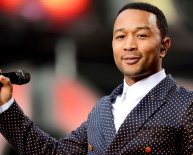
short bobbed haircuts
 Karlie Kloss in Cannes, 2013. Photo: Neilson Barnard/Getty Images
Karlie Kloss in Cannes, 2013. Photo: Neilson Barnard/Getty Images
We recently called the short, blunt bob the official haircut of 2017 after seeing a slew of editorials, runways shows and street style snaps featuring the iconic 'do. While bobbed hair always has an air of modernity, there's still something that's undeniably classic about the look. It's no coincidence that a slew of fierce, fashionable females, from Coco Chanel to Anna Wintour, are associated with the bob haircut.
So, what is it about this simple coiffure that seems to represent confidence, individuality and high style? On a subconscious level, it still serves as an indicator of a woman's choice to break from tradition. While cropped hair has been worn by women across the globe for thousands of years, beauty ideals for women throughout the majority of Western history have usually included long hair (a standard that's held far more constant than those ascribed to "ideal" body types). Of course, there's also something undeniably sexy about the bob. Vogue summed it up aptly in a 1988 story: "When a woman cuts her hair, she creates fresh erogenous zones and effects." Sexy yet sweet, the haircut is somewhat of a paradox: "childishly demure, yet calculating, quirky, and soignée." [3]
![[Left]:](/img/left.png) The look has also coincided with rapid social and political changes in Western society since the start of the 20th century, although the idea of the rebellious, short-haired woman possibly dates back to Joan of Arc. Flappers helped to perpetuate this image, and, almost a century later, a drastic change in the length of a woman's hair is still known to raise a few eyebrows. In order to better understand its cultural impact, we're looking back at the history of the bob to find out how and why it became a quintessential symbol of feminist fashion and what it says about how women are perceived today.
The look has also coincided with rapid social and political changes in Western society since the start of the 20th century, although the idea of the rebellious, short-haired woman possibly dates back to Joan of Arc. Flappers helped to perpetuate this image, and, almost a century later, a drastic change in the length of a woman's hair is still known to raise a few eyebrows. In order to better understand its cultural impact, we're looking back at the history of the bob to find out how and why it became a quintessential symbol of feminist fashion and what it says about how women are perceived today.
[Left]: "Jeanne D’Arc" by Albert Lynch, 1903, Image: Wikimedia Commons; [Right]: Poster featuring Irene Castle, 1919, Image: Wikimedia Commons
 Most people trace the popularity of bobbed hair in Western fashion back to the 1920s, thanks to the haircut's close association with the image of the flapper. However, the cigarette-smoking, flask-wielding flapper of the 1920s didn't exactly start this trend. In 1920, the New York Times traced the origins of the bob "epidemic" to 1903, when two female students at Bryn Mawr college appeared with short hair to play basketball. The article also claims that bobbed hair became popular in Greenwich Village between 1908 and 1912, thanks to the influence of "intellectual women" from Russia who used bobbed hair to disguise themselves from police. [5]
Most people trace the popularity of bobbed hair in Western fashion back to the 1920s, thanks to the haircut's close association with the image of the flapper. However, the cigarette-smoking, flask-wielding flapper of the 1920s didn't exactly start this trend. In 1920, the New York Times traced the origins of the bob "epidemic" to 1903, when two female students at Bryn Mawr college appeared with short hair to play basketball. The article also claims that bobbed hair became popular in Greenwich Village between 1908 and 1912, thanks to the influence of "intellectual women" from Russia who used bobbed hair to disguise themselves from police. [5]
While the bob haircut may have been sported by small groups of rebellious women decades before, many historians track the start of the trend to a well-known American dancer named Irene Castle, who lopped off her hair for convenience before entering the hospital for an appendectomy in 1914. An article in Vogue from January 1915 mentions that Castle, "did the newest thing in coiffures when she bobbed her hair, " but went on to state that, "there is little likelihood of its general adoption." [1] Oh, Vogue! How wrong you were.
By May 1915, the same magazine was featuring advertisements for hair "transformers" that would allow women to try this "latest fad" by providing the visual effect of bobbed hair without permanently sacrificing their long locks. [2] Years before the emergence of the jazz-age flapper, bobbed hair had already started to gain mainstream popularity. Still, most hair dressers were ill-equipped and unwilling to do such a daring chop, and sources indicate that women often resorted to heading to barbershops since barbers were more willing to do such a dreadful deed. [4]
[Left]: Louise Brooks, 1927, Photo: Wikimedia Commons; [Right]: Clara Bow, date unknown, Photo: Wikimedia Commons














